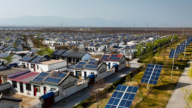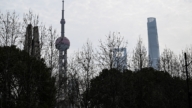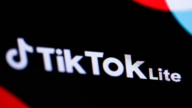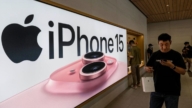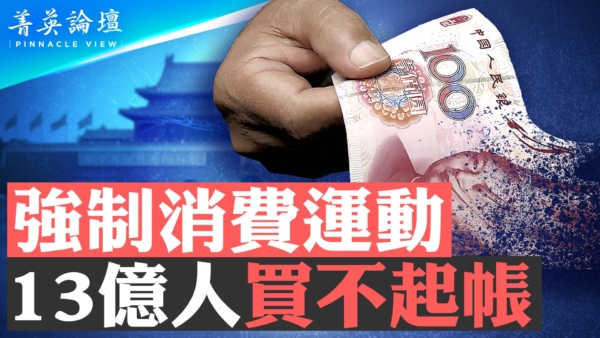【新唐人2014年04月10日讯】自从1994年中国大陆实行分税制度改革以来, 每年的财政收入增涨速度,几乎都是GDP增长速度的两倍,可是,那么这么多的钱都到哪儿去了?我们来看看。
根据中共财政部公布的数字,去年,全中国公共财政收入超过12万9000亿元,比上年增加1万1,889亿元。
不过,分析人士引述“中共中央党校国际战略研究所”副所长周天勇的看法指出,12万9000亿仅仅是预算内收入,需要在12万9000亿基础上,加上土地财政收入和社会保险收入,因此去年(2013年)全中国公共财政收入应该是19万7000亿,平均每个中国人负担1万 4400元。如果加上很多没有算进去的收费项目,周天勇估算,去年中国公共财政收入大概是21万 7000亿左右,占GDP的比重达到38%,按全中国13亿6000万人口计算,去年每个人,包括婴幼儿在内,平均为政府负担1万6000元。
上海“复旦大学经济思想与经济史研究所”所长韦森,在《南方都市报》撰文分析,中国 1994年分税制改革后,政府的财政收入翻了40多倍,而老百姓的收入只翻了七倍多。
中国金融智库研究院巩胜利:“中国政府的运行成本目前在全球是最高的,中国政府是7层构架,党政双层在运行,共产党、还有13个其他的党,还有什么文联、作协这些,都是国家财政负担,它的成本高,自然税收也好,收费也好,罚款也好,都是居高不下。”
中共夺权以前的中国和世界其他国家,一般实行小政府,讲究藏赋予民。例如美国政府只有4级构架,除政府部门由财政开支,各党派和团体是不占财政开支的。
英国一位经济学家对25个发达国家的研究表明,税负高的国家竞争力更低。韦森教授指出,从税法学原理上来说,政府对企业和个人增收任何税收,都是政府公权力对个人私有产权的侵犯,国家机器运转离不开税收,但是应该尽量减少。
不过在中国,各级政府和财税部门的官员,多年来一直认为政府的财政收入越多越好。大多数地方政府在申报政绩时,除了报本地区的GDP增加量外,就是将税收和财政收入增加多少作为政绩来报。2000年以来,中共政府的财政收入,每年差不多都完成当年预算目标的170%以上,有好几年还超过预算目标的200%甚至超过300%。
巩胜利:“共产党掌握了这个国家最大的财富,它不敢公开,一公开后,一公布以后,这个党的存在性,老百姓知道了以后,就发生了动摇,它党费80多年的累积,一个中型国家的财富也没这么大。”
大陆专栏作家刘植荣,曾经做过世界各国的税负比较,他的分析指出,中国2010 年的税负率为43.9%,纳税人需要为税负工作161 天,美国的税负率为27%,纳税人为税负工作99 天。
刘植荣认为,由于中国的个人收入所得税只占总税收的6.6%,中国人的税负主要是由间接税构成,包括增值税、消费税、关税、营业税、土地税、资源税等税种。所以,中国要减轻税负,不应朝个税开刀,而要在间接税上做文章。
美国南卡罗来纳大学艾肯商学院教授谢田:“正常国家首先是人们赚钱,交一定税来养活政府,这才有一个税高税低的问题,中共政府它首先把所有的钱都拿去了,把所有的生产资料、土地、资源、矿山、设备,全都是中共拥有的,它实际上给老百姓一点点勉强糊口的钱,再让老百姓缴税,实际上是第二次、第三次征税。”
另外,1993年的《中国教育改革发展纲要》提出,财政性教育经费在2000年以前,要占到GDP的4%,可是这个比例却在 1995年滑到谷底,只有2.41%。20年来,4%的目标始终没有达标。
大陆《中新网》曾经报导,中国的教育支出占GDP比例,只有国际平均水平的一半﹔医疗卫生支出只有占GDP大约4%,在世界卫生组织的全球排名中倒数第四。
采访编辑/刘惠 后制/李勇
Where Has The Chinese People’s Money Gone?
Since the tax reform of 1994, the Communist regime’s annual
revenue growth has been nearly twice as much as GDP growth.
But, where has all the money gone? Let’s take a look.
According the Ministry of Finance, the public revenue of China
was more than 12.9 trillion yuan, an increase of at least
1.18 trillion yuan from last year.
However, according to Zhou Tianyong, deputy director of
Institute for International Strategies, Party School of the Central
Committee, the 12.9 trillion yuan was only the budgetary revenue.
On top of that, there was also revenue from land and social
securities.
Therefore, the total public revenue for 2013 should have been
19.7 trillion yuan, equivalent to 14,400 yuan per Chinese.
With the additional charges unaccounted for, Zhou Tianyong
estimated it would have been about 21.7 trillion yuan,
accounting for 38% of GDP.
On average, including infants and young children of the entire
Chinese population of 1.3 billion, everyone had 16,000 yuan of
tax burden for the government.
Director of School of Economics, Fudan University, Wei Sen
stated in Nandu.com that since the tax reform in 1994,
government revenue has increased by more than 40 times,
but the average income of people only increased by seven times.
Gong Shengli, Chinese financial think tank researcher:
“The Communist regime is the most expensive government.
It runs both the parties and the politics in seven hierarchy ladders,
including the Chinese Communist Party (CCP), 13 other parties,
and organizations such as the China Federation of Literary and
Art Circles, the China Writers Association and so forth.
They are all the state’s financial burden. The high cost to maintain
these ladders has naturally kept the taxes, charges, and fees high."
An ordinary country, including China prior to the CCP seizure
of power, would run a government that’s small in size and
keeps the wealth to the people.
Take the United States as an example, the government runs in
four ladders.
The expenditure of the government does not include those of the
parties and organizations.
According to a UK economic analysis of 25 developed countries,
it was found that a country with high tax burden is less
competitive;
Professor Wei Sen pointed out that the principles of tax law have
shown that any increases in taxes are an invasion of individual property
rights by the government.
Taxes are inevitable for the state to operate,
but should be reduced as much as possible.
However, the Communist regime and tax officials have preferred
high governmental revenue.
The majority of local governments have considered an increase
of GDP, taxes and revenue as achievements in the annual reports.
Since the year 2000, governmental revenue has been set at a minimum
170% of the budget target.
For several years, the revenue was more than 200% and even
300% of the budget target.
Gong Shengli: “The CCP would not dare to publicize that it has
controlled the greatest wealth in this country.
The revealing of this fact would shake its rule.
The accumulated wealth is more than any medium-sized
country’s entire wealth."
Columnist Liu Zhirong has once compared the tax burdens
around the world.
He found that the year 2010 tax burden was 43.9% for the
Chinese, equivalent to 161 days of work for Chinese taxpayers,
whereas it was 27% for the American, equivalent to 99 days of
work for American tax payers.
Liu Zhirong explained that Chinese individual income tax
accounted for only 6.6% of the revenue.
The tax burden mainly consisted of indirect taxes such as
value-added tax, consumption tax, tariffs, business tax, increment
tax on land value, resources tax and so forth.
Therefore, to reduce the tax burden, it should be done on the
indirect taxes, not individual income tax.
Frank Xie, Professor of School of Business, University of South
Carolina Aiken: “In an ordinary country, people have to earn
money before taxes, which can be either low or high.
But the Communist regime has taken all the money, including
the materials, the land, the resources, and the equipment.
The CCP owns everything and gives only enough for the people
to survive and then taxes the people, which has become the second
or the third tax on the people."
Also, the 1993 Education Reform has proposed an education
budget at 4% of the GDP prior to year 2000.
However, in year 1995, the education budget was only 2.41% of
GDP.
For more than 20 years, the 4% goal has never been reached.
The state media China News once reported that China’s
education expenditure to GDP ratio was only half of the average
ratio in the world;
health spending accounted for only about 4% of GDP,
ranked the last fourth according to the global ranking by
the World Health Organization.
Interview/luihui Post-Production/liyong


